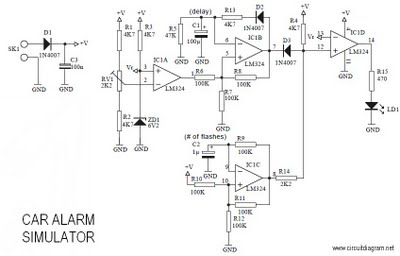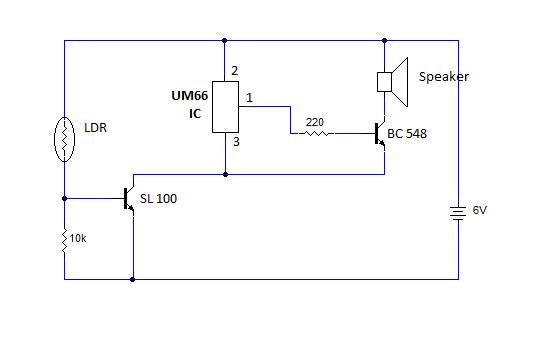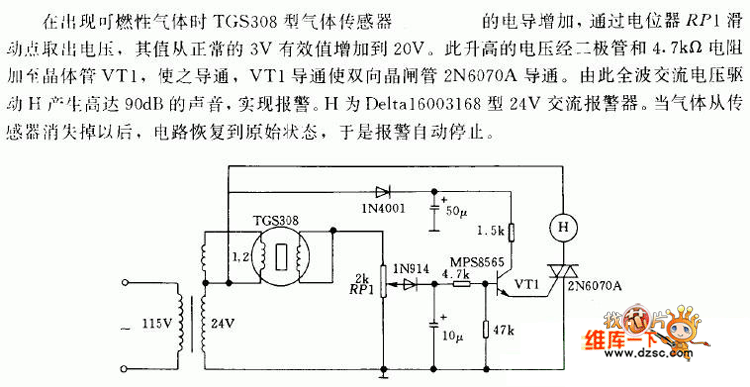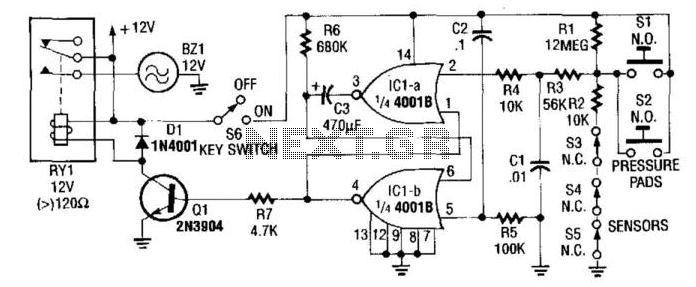
Single Zone CMOS Alarm
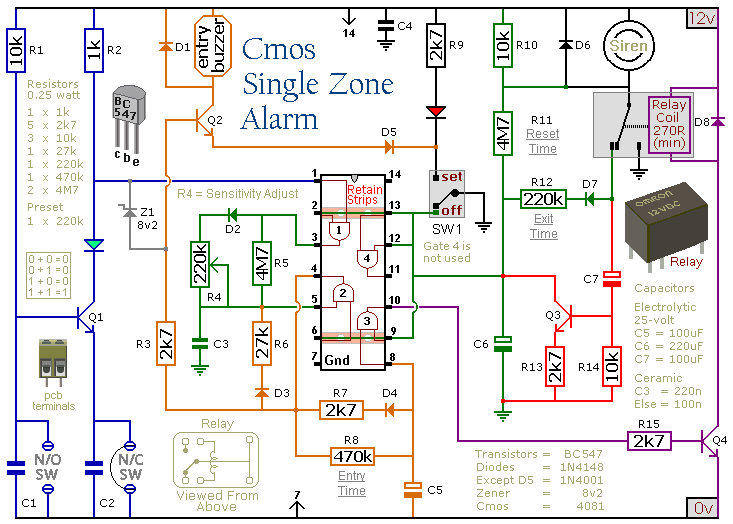
This circuit features automatic Exit/Entry delays, timed Bell Cut-off and System Reset. It has provision for normally open and normally closed switches and will accommodate the usual input devices such as Foil Tape, Pressure Mats, Magnetic Reed Contacts, Passive Infrared Detectors and Inertia (Shock) Sensors.
The described circuit is designed to enhance security and automation in residential or commercial environments by integrating various input devices and providing essential timing functions. The automatic Exit/Entry delays allow for a user-defined period during which the system remains in a standby mode after activation, providing users with sufficient time to enter or exit without triggering alarms.
The timed Bell Cut-off feature ensures that any alert or notification sound, such as a bell or siren, is only activated for a predetermined duration, preventing unnecessary disturbances. This is particularly useful in scenarios where the alert is meant to draw attention without causing prolonged noise.
The system reset functionality is crucial for reinitializing the circuit after an alarm condition has been triggered or when maintenance is required. This feature allows for easy recovery from fault conditions and ensures that the system can be quickly restored to operational status.
The circuit supports both normally open (NO) and normally closed (NC) switches, making it versatile for various applications. The inclusion of input devices such as Foil Tape, Pressure Mats, Magnetic Reed Contacts, Passive Infrared Detectors, and Inertia (Shock) Sensors allows for comprehensive coverage of potential intrusion points. Each of these devices serves a specific purpose: for instance, Foil Tape can detect breaches in a defined perimeter, while Pressure Mats can sense weight changes to identify unauthorized access.
The design should incorporate appropriate resistors, capacitors, and perhaps microcontroller units to manage the timing and logic operations effectively. The schematic would typically illustrate the connections between the input devices, the control logic, and the output indicators (like alarms or lights), ensuring that each component interacts seamlessly to provide a robust security solution.This circuit features automatic Exit/Entry delays, timed Bell Cut-off and System Reset. It has provision for normally open and normally closed switches and will accommodate the usual input devices such as Foil Tape, Pressure Mats, Magnetic Reed Contacts, Passive Infrared Detectors and Inertia (Shock) Sensors. 🔗 External reference
The described circuit is designed to enhance security and automation in residential or commercial environments by integrating various input devices and providing essential timing functions. The automatic Exit/Entry delays allow for a user-defined period during which the system remains in a standby mode after activation, providing users with sufficient time to enter or exit without triggering alarms.
The timed Bell Cut-off feature ensures that any alert or notification sound, such as a bell or siren, is only activated for a predetermined duration, preventing unnecessary disturbances. This is particularly useful in scenarios where the alert is meant to draw attention without causing prolonged noise.
The system reset functionality is crucial for reinitializing the circuit after an alarm condition has been triggered or when maintenance is required. This feature allows for easy recovery from fault conditions and ensures that the system can be quickly restored to operational status.
The circuit supports both normally open (NO) and normally closed (NC) switches, making it versatile for various applications. The inclusion of input devices such as Foil Tape, Pressure Mats, Magnetic Reed Contacts, Passive Infrared Detectors, and Inertia (Shock) Sensors allows for comprehensive coverage of potential intrusion points. Each of these devices serves a specific purpose: for instance, Foil Tape can detect breaches in a defined perimeter, while Pressure Mats can sense weight changes to identify unauthorized access.
The design should incorporate appropriate resistors, capacitors, and perhaps microcontroller units to manage the timing and logic operations effectively. The schematic would typically illustrate the connections between the input devices, the control logic, and the output indicators (like alarms or lights), ensuring that each component interacts seamlessly to provide a robust security solution.This circuit features automatic Exit/Entry delays, timed Bell Cut-off and System Reset. It has provision for normally open and normally closed switches and will accommodate the usual input devices such as Foil Tape, Pressure Mats, Magnetic Reed Contacts, Passive Infrared Detectors and Inertia (Shock) Sensors. 🔗 External reference

